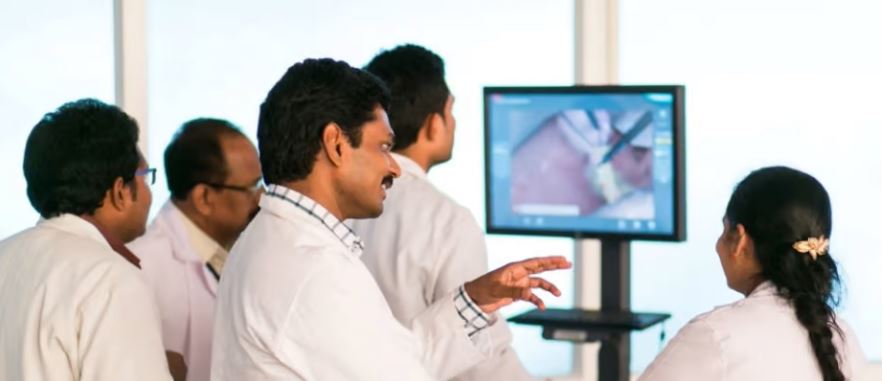适用行业
- 服装
- 教育
适用功能
- 采购
- 销售与市场营销
用例
- 时间敏感网络
服务
- 培训
关于客户
Culture Amp 是一家总部位于墨尔本的公司,成立于 2011 年。它是一个致力于变革组织文化的员工体验平台。该公司拥有 800 多名员工,从事软件开发行业。 Culture Amp 的收入支持副总裁 Simon Kirk 亲眼目睹了像 Gong 这样的工具如何成为组织身份结构的一部分。 Culture Amp 重视通过反馈更快地学习,并努力保持领先于不断变化的文化趋势。该公司致力于提高效率和提高交易速度,以确保成功的增长和可扩展性。
挑战
员工体验平台Culture Amp在不断发展的过程中也面临着挑战。该公司面临着落后的风险,并遇到可能导致其优先事项和流程不一致的情况。作为一家在文化领域工作的公司,他们需要保持领先于不断变化的趋势,特别是在转向远程工作和“大辞职”开始期间。随着规模的扩大,该公司在协调各部门实现共同目标方面也面临着困难。组织规模越大,任务就越分散,导致优先事项出现分歧。另一个挑战是需要提高交易速度,这是公司发展的关键部分。 Culture Amp 注意到,并非所有销售电话都以明确的后续步骤结束,从而减慢了流程。
解决方案
Culture Amp 求助于Gong,这种工具已成为该组织身份结构的一部分。龚的录音和辅导功能帮助 Culture Amp 了解客户的声音,并根据这些知识制定策略。龚的实时反馈帮助 Culture Amp 指导他们的团队调整方法以满足市场需求。龚还帮助协调各部门,共同努力实现共同目标。通过关键字或交易状态搜索来电的功能使您可以更轻松地快速确定正在发生的事情的真相,从而使每个人都可以专注于解决紧迫的问题。龚还帮助 Culture Amp 提高了交易速度。通过深入研究每个电话的关键部分,他们能够确定问题的普遍程度,并制定纠正计划来重新培训销售代表。公分析用于查看该计划是否有效。龚还通过辅导帮助提高效率,这是销售团队成功的关键部分。
运营影响

Case Study missing?
Start adding your own!
Register with your work email and create a new case study profile for your business.
相关案例.

Case Study
Fire Alarm System and Remote Monitoring Sytem
Fire alarm systems are essential in providing an early warning in the event of fire. They help to save lives and protect property whilst also fulfilling the needs of insurance companies and government departments.Fire alarm systems typically consist of several inter-linked components, such as smoke detectors, heat detector, carbon monoxide, manual call points, sounders, alarm and buzzer. The fire alarm system should give immediate information in order to prevent the fire spread and protect live and property.To get maximum protection a shoe manufacturer in Indonesia opted for a new fire alarm system to monitor 13 production sites spread over 160 hectars. Although the company had an existing fire alarm system, it could not be monitored remotely.It was essential that the new system would be able to be monitored from a central control room. It needed to be able to connect to the existing smoke detector and manual call point. Information should be easily collected and passed on to the Supervisory Control and Data Acquisition (SCADA) system. Furthermore, the system should have several features such as alarm management, auto reporting, being connected to many client computers without additional cost, and run 24/7 without fails. The company also needed a system which could be implemented without changing the architecture of the existing fire alarm system.

Case Study
IoT Applications and Upgrades in Textile Plant
At any given time, the textile company’s manufacturing facility has up to 2,000 textile carts in use. These carts are pushed from room to room, carrying materials or semi-finished products. Previously, a paper with a hand-written description was attached to each cart. This traditional method of processing made product tracking extremely difficult. Additionally, making sure that every cart of materials or semi-finished products went to its correct processing work station was also a problem. Therefore, the company desired an intelligent solution for tracking assets at their factories. They also wanted a solution that would help them collect process data so they could improve their manufacturing efficiency.

Case Study
Retailer Uses RFID Scanner to Improve Efficiency
Patrizia Pepe wished to improve the logistics of their warehouse: accepting incoming goods from their production sites, movement of items throughout
the warehouse, and packaging of goods for distribution to the retail locations. They initially tried to use barcodes for this function. Because barcodes must be individually scanned within a line-of-sight, the acceptance of goods coming into the warehouse was too time consuming. Working with the University of Florence, Patrizia Pepe instituted a five-month pilot project beginning in August of 2009 to test the validity of an RFID solution. The pilot involved tagging of about 60,000 items for the second seasonal collection, and convinced the company to move forward with tagging all items.

Case Study
Monitoring and Controlling Automatic Mixing and Dispensing Machines
As technology advances, textile manufacturing has been transformed from a labor-intensive to a partially or fully automated industry. Automation is significant in all segments of textile production - from spinning to printing, and textile machinery manufacturers are constantly searching for new technologies and automation processes will increase the productivity of their machines. The color paste mixing and dispensing machine is an essential part of the printing and dyeing process. With the advantage of automatically computerized controls and database management, the system can significantly improve its dispensing precision, working efficiency and production quality as well as reducing material consumption.

Case Study
Revolutionizing Medical Training in India: GSL Smart Lab and the LAP Mentor
The GSL SMART Lab, a collective effort of the GSL College of Medicine and the GSL College of Nursing and Health Science, was facing a challenge in providing superior training to healthcare professionals. As clinical medicine was becoming more focused on patient safety and quality of care, the need for medical simulation to bridge the educational gap between the classroom and the clinical environment was becoming increasingly apparent. Dr. Sandeep Ganni, the director of the GSL SMART Lab, envisioned a world-class surgical and medical training center where physicians and healthcare professionals could learn skills through simulation training. He was looking for different simulators for different specialties to provide both basic and advanced simulation training. For laparoscopic surgery, he was interested in a high fidelity simulator that could provide basic surgical and suturing skills training for international accreditation as well as specific hands-on training in complex laparoscopic procedures for practicing physicians in India.








